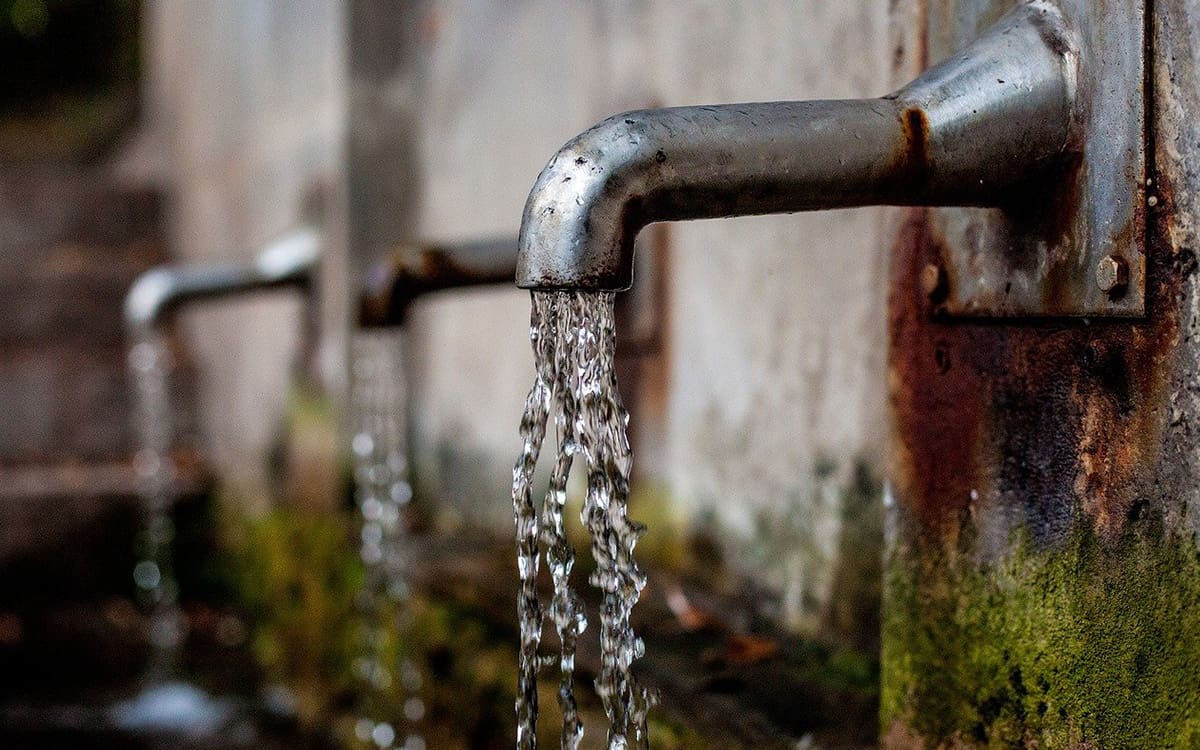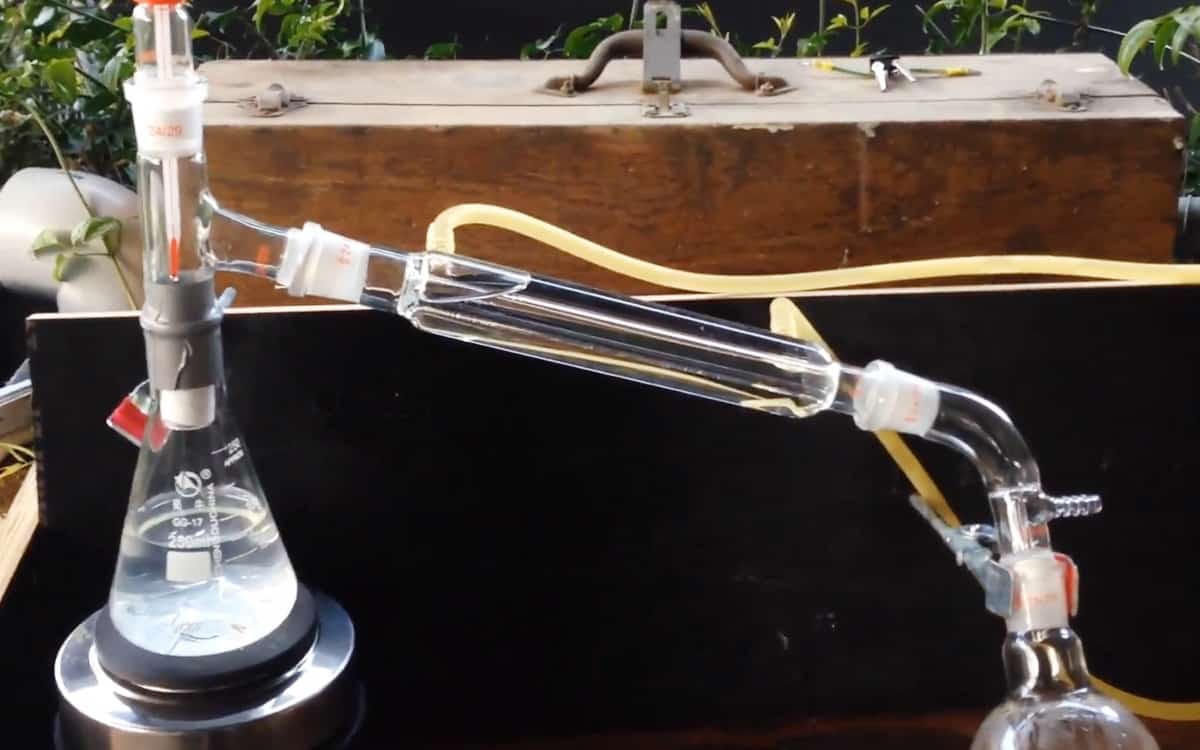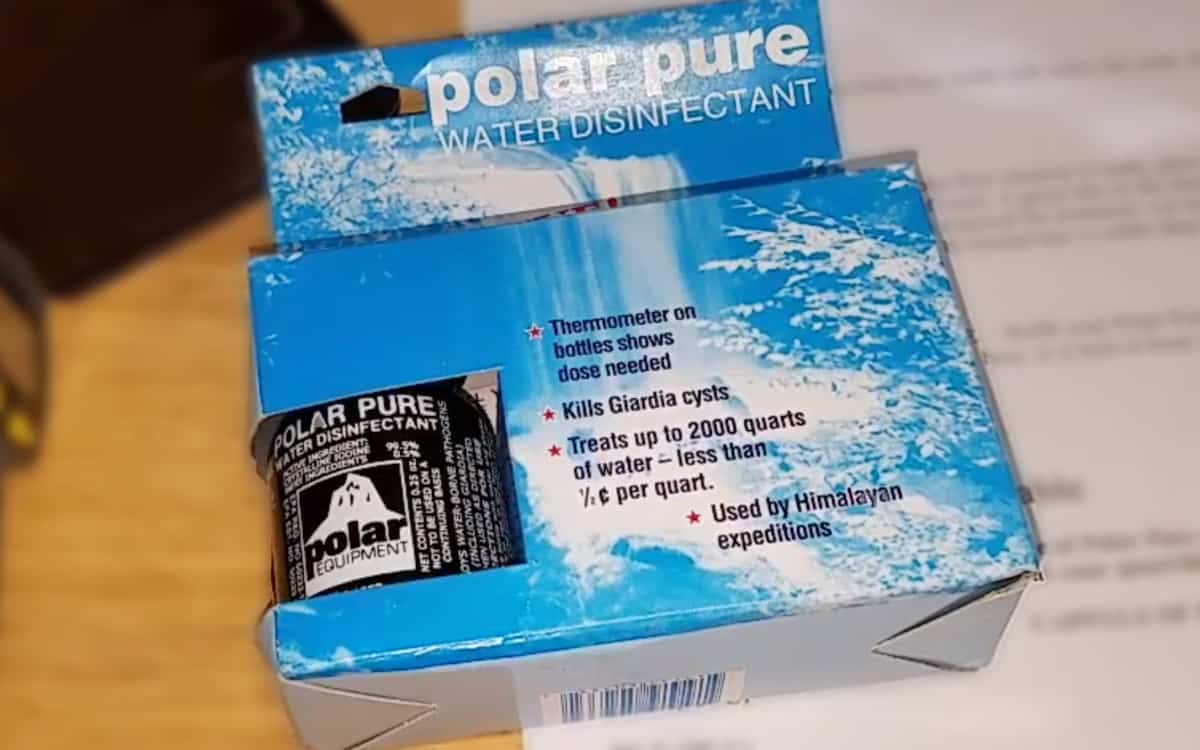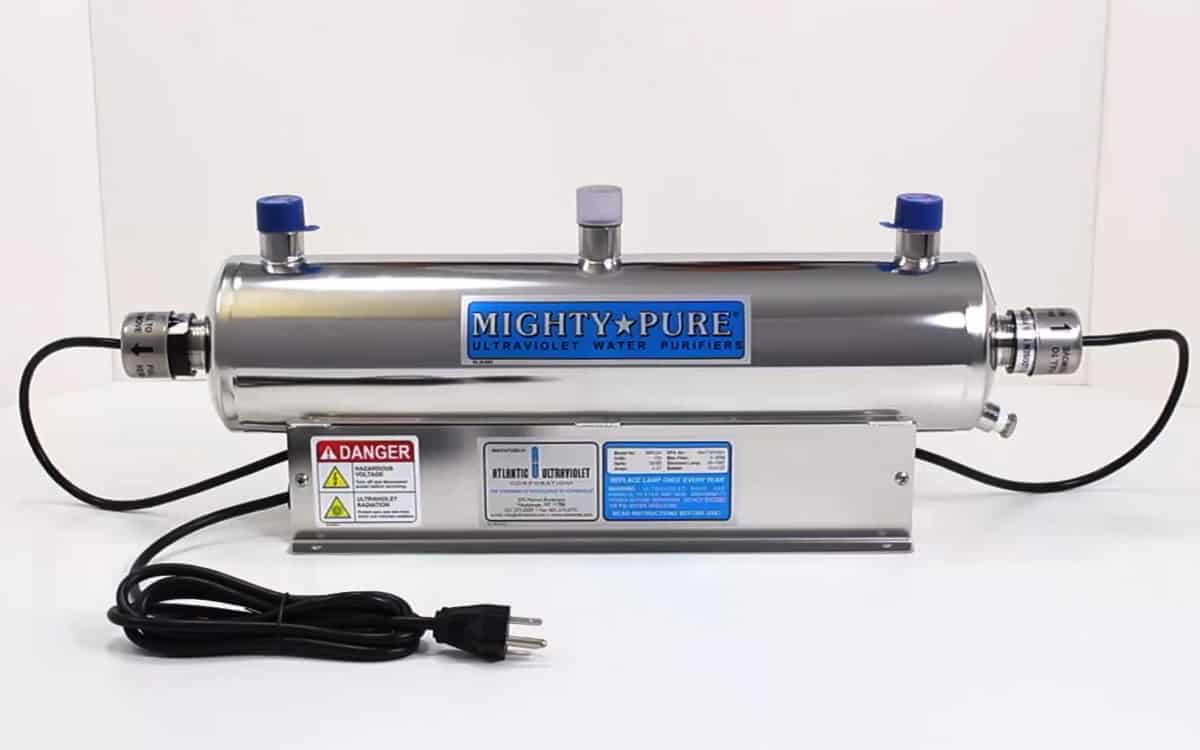Water is everywhere, the surface of the earth is composed of 71% water. However, only 0.5% of that is potable, which means it is safe for humans to drink, brush your teeth with, and used for cooking. As such, different methods need to be applied to purify water to make it safe for drinking.
What is the best way to purify water? Purifying water can be achieved through various methods. All have the same goal of decontaminating or removing impurities to make it safe for human consumption. Below are some of the most widely used methods to purify water:
- Boiling
- Distillation
- Filtration
- Chlorination
- Addition of Iodine
- UV Radiation
These methods can be used independently to produce potable water or combined to produce a purer form of water. All other modern types of water purification systems are based on a combination of the methods listed above.
The Different Contaminants

The main reason for purifying water is to remove contaminants and impurities. These include bacteria, protozoa, parasitic worms, and their eggs, viruses, chemicals, and heavy metals. All of which can harm humans when ingested.
Bacteria
Bacteria are microscopic organisms that are too small to be seen by the naked eye. Not all bacteria cause harm. Our body hosts billions of bacteria inside our gut, on our skin, and in most of our orifices. However, the bacteria that live in the environment outside our body often causes illnesses.
One of the sources of these harmful bacteria happens to be contaminated water. Ingesting most of these contaminants causes severe diarrhea, and in an apocalyptic setting is almost a death sentence.
Protozoa
Protozoa are similar to bacteria, but are larger and have appendages that allow movement. These microorganisms love moisture and can be found mostly in water. Aside from causing diarrhea, most protozoa are parasitic in nature. They can live inside the linings of our gut, and stay there for long periods. They are generally harder to get rid of than bacteria.
Parasitic Worms and their Eggs
Most parasitic worms are waterborne and include roundworms and tapeworms. These organisms can enter the body through drinking the larval form, or their ovum (eggs). Inside the intestines, they can grow several meters and competes with our body for nutrition.
In some cases, they can invade the surrounding tissues or even travel through the blood into the different organs. A ball of Ascaris (roundworm), can even cause intestinal blockage. In rare cases, a tapeworm called Taenia can travel into the brain causing brain tissue destruction, encephalitis (swelling of the brain), and finally, death.
Viruses

Viruses are a major cause of waterborne diseases that are often overlooked. They affect humans after ingestion of water that is contaminated by animal or human urine and fecal matter. Most of these viruses cause gastroenteritis, but some can cause a systemic infection, and even directly affect the brain, or even promote cancer growth.
Chemicals
Pesticides, herbicides, and other chemicals are often found in the water system. In an SHTF situation, preppers must assume that everything is contaminated by chemicals, especially the water supply. Ingestion of chemically contaminated water can have an immediate effect or more insidious effects that accumulate to cause a more severe disease in the long run.
Heavy Metals
Heavy metals often get to the water supply through the weathering of rocks, soil, volcanic activities, and other human activities. The most common heavy metals found contaminating fresh water are arsenic, cadmium, chromium, copper, nickel, lead, and mercury.
Most of these heavy metal pollutants cause immunosuppression and kidney failure. Like the chemicals, some of these metals take a while before their effect can be seen.
The Importance of Purifying Water for Preppers and Survivalists
For preppers, and others alike, when SHTF, a problem that can arise is the possible contamination of the water supply or the destruction of the water supply system. During these times, a water source needs to be discovered. However, the quality of the new water source may not be guaranteed safe for human consumption.
One of the best survival techniques is to avoid getting sick. This can be achieved by purifying water from questionable sources. In extreme scenarios, knowledge on how to purify water for drinking is going to be essential for survival. A person can live without eating for almost 1 month, but can die with in 3 days without any water intake.
Methods of Purifying Water
Purification of water is the process of removing contaminants from water either through a physical process or through the inactivation of these impurities through the use of chemicals.
-
Boiling

Boiling is one of the oldest and easiest ways of purifying water. It works by heating the water up to 100 oC (212 °F), killing bacteria, protozoa, viruses, and different worms and their eggs in the process. However, it does not remove heavy metals and some chemical contaminants.
To properly purify water by boiling, preppers must start with clear water. This is achieved by letting the murky water sit for a while until most of the suspended particles settle at the bottom and forms a sediment.
The water is then filtered through a fine mesh or a cloth and is heated up until a rolling boil is reached. It’s left to boil for at least 1 minute at sea level, and at least 3 minutes at more than 6,562 ft above sea level.
A common misconception is that water needs to be boiled at a minimum of 5 minutes up to 10 minutes for it to be potable. Microorganisms, even the heat resistant spores of bacteria gradually die at temperatures of 60 oC (140 °F), and rapidly at temperatures above 70 oC (158 °F).
A rolling boil at sea level is achieved at 100 oC. At higher altitudes, the boiling point of water decreases, and at 6,562 ft above sea level, the boiling point of water is reached at 93.3 oC (199.94 °F). At these heights, the CDC recommends boiling water for 3 minutes just to be safe.
This is why all pathogens (disease-causing organisms) would have died even before reaching the boiling point. Hence, boiling water for 5 minutes is excessive and pointless.
When SHTF, boiling is one of the cheapest, easiest, and fastest ways to access potable water. This is why a pot and fire starters should be a part of all preppers’ kits.
-
Distillation

Distillation is another one of the oldest water purification methods still being used today. It removes up to 99.5% of all impurities of a liquid if done correctly. It works by evaporating or boiling the contaminated water to produce water vapors that get suspended in the air.
The water vapor is then routed to another container, or is allowed to cool down and condense on a clean surface where it collects, and forms larger water droplets which are then collected. The final product is an almost pure form of water.
This process leaves most contaminants in the original container and kills off pathogens in the process if boiling was used. However, some chemical contaminants such as certain pesticides, volatile solvents, benzene, and toluene are not completely removed.
This is due to these chemicals having a lower or similar boiling point as water, which enables them to evaporate and get mixed with the water vapor. Unless an additional process is done before condensing the water vapors, distillation will not achieve a 100% pure form of water.
Distillation is also useful in the desalination process of saltwater. A big drawback is that it’s still costly and inefficient for large scale application. Nonetheless, in an SHTF situation, when the only source of water is the ocean, then distillation is a worthwhile method to use in order to get drinkable water.
-
Filtration

Filtration is the process of using a semi-permeable membrane (filter) to prevent the passage of impurities, and separate water from the different contaminants. It works by filtering out large particles that are suspended in the water.
There are different forms of filtration. A simple form of filter is just using a piece of cloth to sift out sand and other larger debris. A more complex filtration structure is a multilayer filter made up of fine sand at the top, coarse sand in the middle, and gravel at the bottom.
This is filled with water at the top and uses gravity to direct water downwards. The water that drips down will be clear, and free from most contaminants. However, these types of filtrations are limited in that they are unable to filter out most bacteria, protozoa, viruses, and chemicals.
A subset of filtration is ultrafiltration which utilizes a filter with finer pores. This enables it to sift out bacteria, protozoa, worms and their eggs, and some heavy metals. Despite the finer pores, it still cannot filter out viruses and some chemicals which are smaller than the fine pores of an ultrafilter.
Activated charcoal is an attractive material for ultrafiltration. If used as a filter, it will not only sift large particles but due to its characteristic to adsorb molecules, it can potentially filter out chemicals and viruses.
In a survival setting, ultrafiltration will be harder to implement. The 3-layer filter will be easier to set up, and becomes online earlier, and will be more useful especially when combined with boiling to kill off the unfiltered pathogens.
Filtration and distillation, when combined can be applied to produce fresh water from the ocean. This is extremely useful if there are no other sources of water. This process will require a lot of energy and time for it to produce a sufficient amount of freshwater. Still, for survival purposes, it is a valuable option that must not be forgotten by preppers and survivalists.
-
Chlorination

Chlorine is a potent, highly reactive chemical that is widely used in water treatment plants. It kills most pathogens available when a sufficient amount is mixed with water, and allowed ample time to take effect. It is also readily available, inexpensive, and fairly easy to implement.
However it cannot kill worm ovum (roundworm and tapeworm eggs), some protozoan cysts (a highly resistant form of protozoa), and fails to deactivate some chemicals. It can however react with some metals and impurities to make the water clearer and softer.
By applying chlorine to the water, it controls biological growth, removes metals that cause hardness (iron and manganese), removes tastes and odors, color, and controls algal growth by leaving a residue. This is why it is used in all water treatment plants, at different stages of treatment.
The different forms of chlorine preparation make it easy to stockpile, ready to be used when SHTF. Chlorine powder, chlorine tablets, and even bleach can be used in an emergency setting to secure safe drinking water.
Calcium Hypochlorite
Chlorine powder and tablets are commonly composed of calcium hypochlorite. These are shelf-stable, but highly corrosive, and highly reactive chemicals that can be easily bought. However, care must be taken in storing them, making sure to store them in a dry area, away from organic materials.
A combination of calcium hypochlorite and any organic material can create enough heat to cause an explosion. The powder or tablet form readily absorbs moisture and produces toxic chlorine gas as a result. It also has a very strong chlorine odor, which should be considered during storage.
To disinfect water using calcium hypochlorite, a ratio of 0.5 to 5 mg per liter of water is needed for at least 30 minutes. This ratio is increased depending on how dirty or contaminated the water is.
Sodium Hypochlorite (Bleach)
Sodium hypochlorite or more commonly known as household bleach is a liquid preparation of chlorine. Similar to calcium hypochlorite, it is highly corrosive and should be stored in a cool, dark place.
Unlike calcium hypochlorite, sodium hypochlorite is not shelf-stable and will naturally decompose. It cannot be stored for more than one month at a time. Despite this, it is the easiest form of chlorine to handle.
To purify water, sodium hypochlorite is mixed with water with a ratio of 0.2 to 2 mg per liter of water for at least 30 minutes.
General Considerations in Chlorination

The rule of thumb when using chlorine as a purifying agent is to use the correct amount and to allow enough contact time. Contact time (CT) is the time from the administration of chlorine, up to the time the water is used for drinking. The minimum CT is 30 minutes, and the longer the contact time, the better the disinfecting effect will be.
This is why the concentration of chlorine administered can be lowered down, as long as the contact time is increased. The opposite can also be done by increasing the concentration, to decrease the contact time.
The degree of contamination of the water should also be considered, as the chlorine mixed can be depleted by binding to metals and organic impurities, making it less effective in killing pathogens. This is why it is also a good idea to filter the water to remove larger particles.
Lastly, the temperature of the water plays a vital role in the effectiveness of chlorine. The purification effect is better, and faster if the temperature of the water is from 18 to 37 oC.
Safety Concerns
Chlorine is highly corrosive to the skin, the eyes, and all the mucosal lining of the body. This is why care should be taken whenever it is used. There have been concerns that it can contribute to the formation of bladder cancer in the long run.
Despite this, when SHTF, there is no risk in drinking chlorinated water that outweighs the risk of dehydration. This is because the low concentration of chlorine used in disinfecting water will not cause any immediate harm. Cancer formation can take years and requires other variables for it to happen.
-
Iodination

Iodine, like chlorine, is a halogen element that is used in water purification. It kills most bacteria, protozoa, and viruses. It is more effective in killing Giardia cysts, but like chlorine, does not affect roundworm and tapeworm eggs.
One of the main problems in its use is that there are people allergic to iodine, which limits its use for water purification. It should also be avoided by people who have thyroid problems, women over fifty, and pregnant women.
Iodine degrades when exposed to sunlight, which is why it must be stored in a dark bottle, or a cool, dry, and dark place. It is available in tablets, crystal, or as a liquid. For the tablet and crystal form, different manufacturers have their instructions on how to use it and should be followed.
To use the 2% liquid iodine tincture, add 5 drops per quart of clear water. If the water is murky or cloudy, add 10 drops of iodine, and let it stand for 30 minutes. Still, it is best to filter out water before adding any iodine or chlorine.
Another problem with the use of iodine is that it discolors the water and imparts an astringent taste. This is often counteracted by adding 50 mg of vitamin C to inactivate the iodine, clearing up the color, and removing the unpleasant taste. However, the iodine must be mixed first, and allowed to take its effect before adding vitamin C.
General Considerations in Iodination
Iodine shares the same rules as chlorine in terms of its use. It should be used in water with temperatures above 21 oC to guarantee its effectiveness. The contact time is also the same, with a minimum of 30 minutes, and increases in effectivity the longer it sits before deactivating the iodine with vitamin C.
Safety Concerns
Iodine is generally safe for consumption since it is a normal part of the mammalian diet. Yet, the 2% liquid tincture of iodine can be irritating to the skin if allowed to stay for extended times. The crystal form on the other hand is toxic, and the manufacturer’s instruction should be followed correctly to prevent accidental poisoning.
-
UV Radiation

Ultraviolet rays appear naturally in sunlight. It kills most microorganisms but does not affect worms and their eggs. It also cannot remove or deactivate other impurities.
An issue with the use of sunlight to disinfect water is that it takes a long time to work. The water needs to be exposed to direct sunlight for a minimum of 6 hours to completely kill all bacteria, viruses, and protozoa.
The effective and efficient use of UV radiation can only be achieved with the use of a mercury arc UV lamp that produces Ultraviolet C radiation in specific intensity and saturation levels. As such, its importance in a survival setting is very little compared to other water purification methods.
Despite this, sunlight is free and readily available. This is why the use of sunlight to purify water should not be completely disregarded.
When SHTF Use Everything Available to Survive
In an emergency setting, such as when SHTF, potable water is one of the main resources that should be immediately secured. Not one of the above methods can 100% purify contaminated water. Although, the combination of the methods mentioned will greatly increase the purity if done properly. A good starting setup would be to use a filter to sift out larger particles, and then boil the water.
If you have more materials and resources, then a distillery should be made next. Chlorine and iodine are two portable chemicals that will be useful to create fresh water in a short amount of time. Lastly, the use of UV radiation can be used as a passive way of producing purified water.
